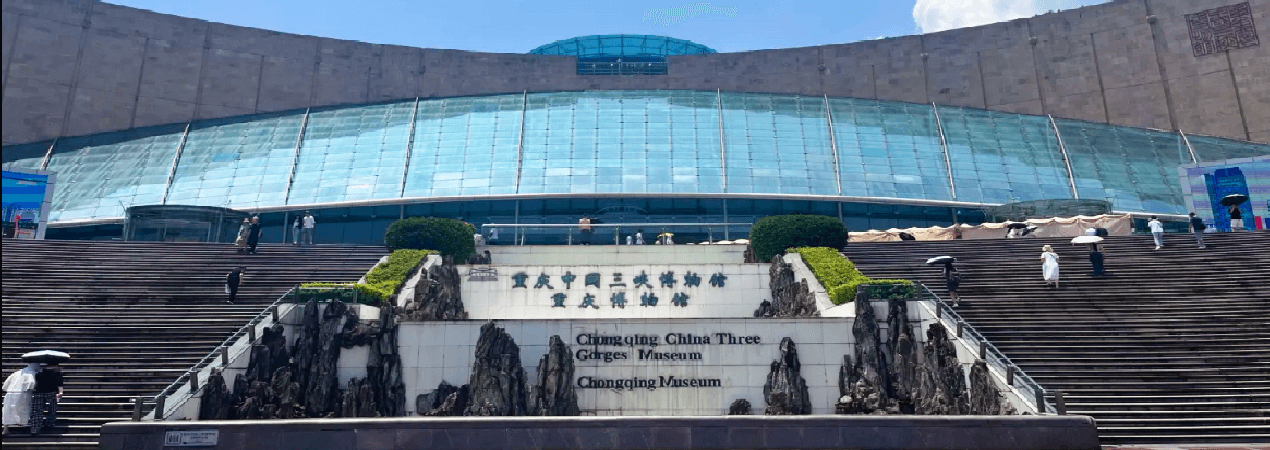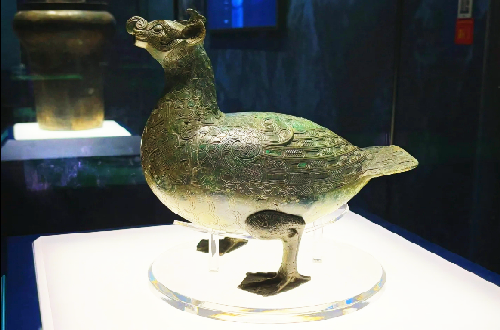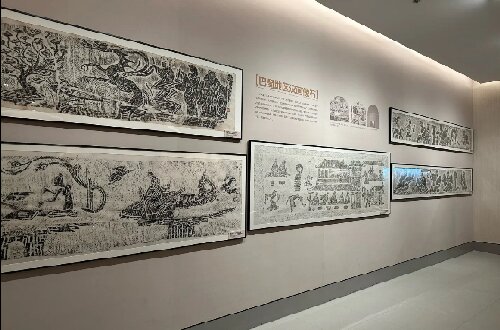Three Gorges Museum

The China Three Gorges Museum houses more than 115,000 sets of cultural relics (with the number of individual pieces exceeding 280,000), including a large number of cultural relics from the Paleolithic Age to modern and contemporary times.
In the section of Bayu culture, exquisite cultural relics such as bronze wares and pottery wares demonstrate the wisdom of the ancients. In the exhibition area of Three Gorges culture, physical objects, pictures, and models show the scenery of the Three Gorges and the greatness of the Three Gorges Project. The museum is of great significance in inheriting history and spreading culture. It is an ideal place to have an in-depth understanding of the cultural context of Chongqing and the Three Gorges region.
- Chinese name: 重庆三峡博物馆 zhòng qìng sān xiá bó wù guǎn
- Suggested time: 3 hours
- Ticket: Free (advance online reservation required for visitors under 60 years old)
- Open hours: 9:00 - 17:00 (entry stops at 16:30), closed on Mondays
- The best time to visit: all year around
- Address: No. 236, Renmin Road, Yuzhong District, Chongqing, China
- How to get there: Take Line 10 to Daditang Station and get off at Exit 4. Then walk for about 8 minutes to reach the museum.
Highlights of Three Gorges Museum
The "Magnificent Three Gorges" Exhibition Hall
 Bronze bird-shaped Zun
Bronze bird-shaped ZunThe magnificent Three Gorges Exhibition Hall on the first floor can be said to be the highlight of the Three Gorges Museum. Here you can visit the museum's treasures, such as the bronze bird-shaped zun, the bronze tiger-shaped cymbals of the Warring States Period, and the three-ram bronze zun of the Shang Dynasty.
The high-definition large circular-screen, which loops the display of the natural and cultural history of the Three Gorges area, adds to the allure of this exhibition hall, making it one of the most eye-catching and high-tech spaces in the entire museum. You can appreciate the natural scenery of the Three Gorges and learn about the local human geography by watching the circular screen movies here, and enhance your natural science education and geographical knowledge.
Chongqing: The Road of the City
 The Ancient Bayu Exhibition
The Ancient Bayu ExhibitionOn the second floor, this exhibition hall introduces the history of Chongqing. The exhibition about Bayu region is very valuable for learning. The Ancient Bayu unit showcases the ancient civilization of Chongqing with the collection of cultural relics from the Stone Age and Bronze Age, tracing the roots of 3,000 years of culture.
In addition, Bayu region also has a relatively complete sequence of human development from the early to late Paleolithic period, and is one of the important areas for studying early human activities. This exhibition hall has important educational value for studying urban studies and history.
Sculptural Art of the Han Dynasty in Bashu Region
On the third floor of the museum, you can see representative sculptures and cultural relics of the Bashu region in the Han Dynasty, such as stone que, stone reliefs, brick reliefs, pottery figurines, and burial items. Among them, there are 47 first - class cultural relics. Since the Han Dynasty was a time of lavish burials, most of the collections in this exhibition hall are burial items.
The first things you see after entering are the stone que and stone pillars in front of the Han Dynasty tombs. They are large in size and reflect the carving style of China before the introduction of Buddhism. These sculptures are also important materials for studying the social life, cultural customs and aesthetic concepts of the Han Dynasty. They help improve your artistic appreciation and aesthetic level.
Porcelains of Different Dynasties
When you reach the fourth floor, you can see a large number of porcelains from different dynasties collected by the Chongqing Three Gorges Museum. Ranging from the Shang and Zhou Dynasties to the Republic of China period, these porcelains cover a wide variety of kilns and a rich assortment of types, almost spanning the entire history of Chinese ceramics. Among the treasures of the museum on display in this exhibition is the seated white porcelain Guanyin statue made by He Chaozong from the Dehua Kiln.
Drop us a line and we'll connect you with the top China expert in no time!